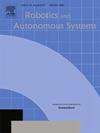Path planning strategy for a space relocatable robotic manipulator based on improved GBNN algorithm
IF 4.3
2区 计算机科学
Q1 AUTOMATION & CONTROL SYSTEMS
引用次数: 0
Abstract
For the purpose of assisting astronauts in performing specific operations on orbital space stations, the space relocatable robotic manipulator has been studied and applied by many countries. In practical application scenarios, achieving optimal mobility and resource efficiency are the primary technical requirements for this manipulator. Therefore, we have developed an improved path-planning strategy based on the Glasius Bio-inspired Neural Network algorithm. This approach reduces computational resource consumption, dynamically avoids obstacles, and accounts for physical constraints. To simplify the complex process of 3D map rasterization, our method directly abstracts and constructs a topologically connected graph for the grasping points. Furthermore, the improved algorithm enhances the energy efficiency of path planning by incorporating a function that integrates global information. It also employs a diffusive updating method, enabling the rapid propagation of neuron activity values to target points within a single iteration. To further advance the practical application of the algorithm, we have considered the kinematic properties and physical constraints of the manipulator. Finally, we developed a dual-layer planning strategy that enables the manipulator to move efficiently across the surface of a non-regular space station. The effectiveness and advantages of the improved algorithm have been thoroughly evaluated through comprehensive comparisons with existing algorithms.
求助全文
约1分钟内获得全文
求助全文
来源期刊

Robotics and Autonomous Systems
工程技术-机器人学
CiteScore
9.00
自引率
7.00%
发文量
164
审稿时长
4.5 months
期刊介绍:
Robotics and Autonomous Systems will carry articles describing fundamental developments in the field of robotics, with special emphasis on autonomous systems. An important goal of this journal is to extend the state of the art in both symbolic and sensory based robot control and learning in the context of autonomous systems.
Robotics and Autonomous Systems will carry articles on the theoretical, computational and experimental aspects of autonomous systems, or modules of such systems.
 求助内容:
求助内容: 应助结果提醒方式:
应助结果提醒方式:


